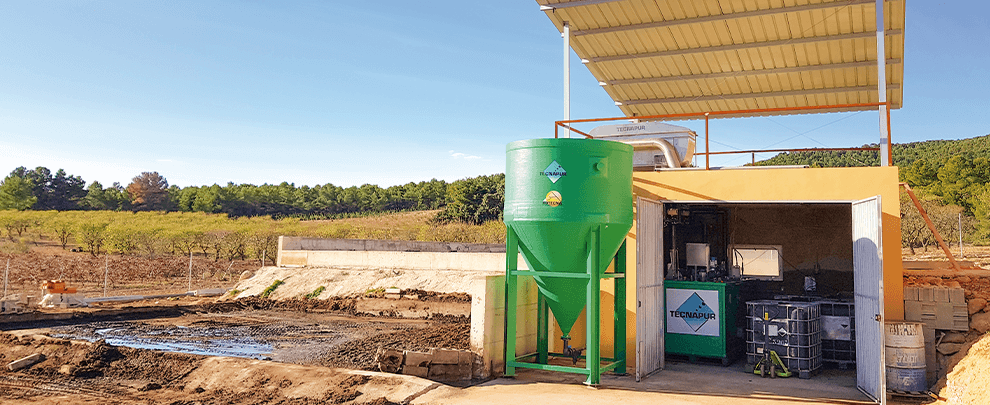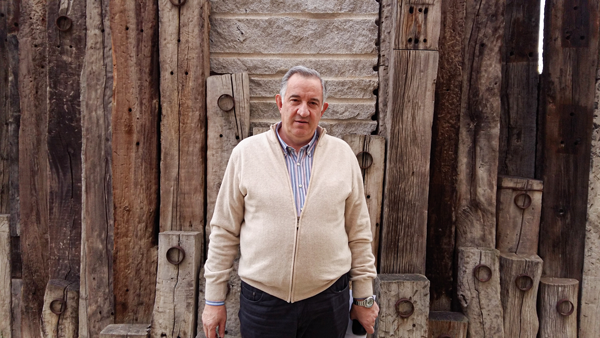Blog
Blog

The control of the management of slurry, a question of sustainability
03rd May 2021 - News
After approving Decree 53/2019 in 2019 to guarantee a sustainable slurry management system in the pork industry, in 2021, the Government of Aragon has terminated the moratoriums granted to the industry for its adaptation to European regulations. In this way, a series of inspections have been initiated to ensure that ranchers and farmers involved in the entire slurry cycle, from farm collection, transportation, treatment and storage, to its application as a fertilizer, comply with the regulations. To learn about these changes, we spoke with the general director of Food Quality and Safety of Aragon, Enrique Novales.

Enrique Novales, General Director of Food Quality and Safety of Aragon.
This 2021 in Aragon, the moratoriums to comply with the community regulations on slurry management and its application in crops, finalise. What are the changes that have come into effect and must be met by the sector?
On the one hand, this year, Decree 53/2019 comes into effect finally, which establishes that all development, both pig farms with land and those that do not have, must present a management plan for the slurry they generate and specify where and how they manage the slurry. In other words, they have to tell us if they do self-management, so they will have to say how much surface they are using to manage the slurry or, if a management centre operates the slurry, specify which centre.
On the other hand, there have also been changes in the regulations for applying slurry to the soil. In this sense, the application made on a plate or fan is prohibited, and now it must be done through hanging tubes.
What management options are raised?
There are two options: self-management, in which the farmer has a good surface to manage and apply the slurry he generates, and the management centres, which collect the slurry generated by the farms and take care of their management. In the integration system, most Aragon management centres understand that they are the most effective and economical option. For this reason, in Aragon, management centres have been implemented, and, currently, around 32 management centres are in operation, and the idea is that the number increases. On the other hand, there are also nitrification plants trying to lower nitrogen from the slurry. Still, they cost around 3-5 euros per cubic meter, when in appropriate agricultural management, the cubic meter is about 2 euros. Finally, we also have four slurry treatment areas built to cover the current need in regions with a high concentration of livestock activity. Two are in the Litera area, in Zaidín and Capella (Huesca), and two others in Peñarroya de Tastavins and Valderrobres (Teruel). This is another system, quite a lot more more expensive, but which must be used in areas where there is no agricultural area if the industry wants to be sustainable.
What management actions will the government carry out?
From the government, we will require all the ranchers who make self-management to declare how they manage the slurry, and we will need the same information from the management centres to know where they get the slurry, where they administer it, how, etc. Regarding the application, a control and inspection campaign will be carried out so that all the tanks that are applying slurry have the system of hanging tubes and not fans.
"The countries that are buying the product from
us want the production to be sustainable."
Are sanctions considered?
Aragon, with Catalonia, are the two communities that offer 50% of the national pork production. Therefore, they are two territories that might have slurry management problems. By this, I mean that, although the application of sanctions is foreseen, in the first years, we have to refine the implementation of the standard and the way to control its compliance a little. We cannot go from 0 to 100, we must move forward gradually. On the other hand, in the vats' inspections, the application of economic sanctions is already foreseen in cases where the slurry is not applied employing hanging tubes.
Has adaptation been an excellent investment for the sector?
Carrying out the treatment plan does not comprise any investment. What we are asking is to justify the management of the slurry that should already be done correctly. Another thing is related to the changes to the slurry application, which has required an adaptation of the vats and, therefore, an additional cost during the last year that, according to the sector, ranges between 15,000 and 25,000 euros. In this sense, at the time, the Ministry of Agriculture offered aid for the modernization of agricultural machinery and, according to the data we have, Aragon has been the autonomous community that has benefited most from this type of aid.
What benefits do the application and control of these measures bring?
What is intended with the management control of the slurry is about the industry’s sustainability. It is essential to comply with European regulations, but, in turn, taking into account that the Spanish pig sector is exporting 50% of what it produces, this production must be sustainable. If the industry is not sustainable, the export can be compromised at any time because the countries that are buying the product from us want the production to be sustainable.
Faced with this new reality, is the Aragonese industry already adjusted to the new regulations?
I think so. Indeed, as in any adjustment to a new regulation, there is always some percentage of ranchers who wait until the last minute to see if the law changes or is delayed. Still, I think that, this February, practically all the vats that manage slurry in Aragon already work with the hanging tube system.






